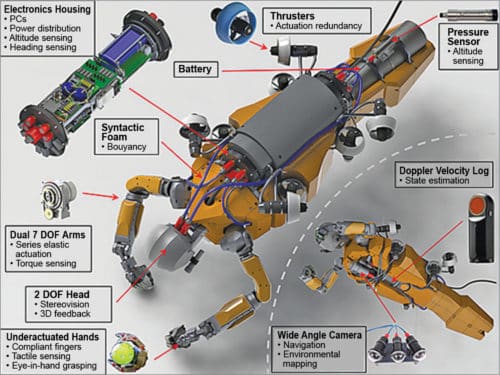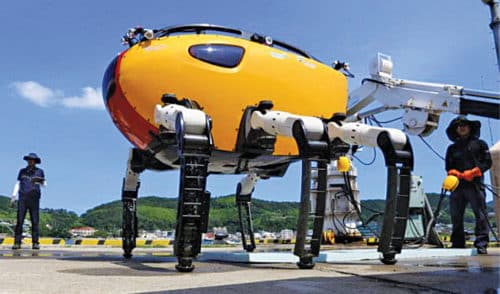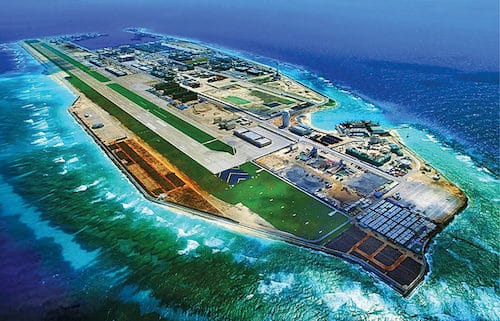Artificial intelligence (AI) and autonomous robots are used to speed up the exploration and study of hard-to-reach deep-sea ecosystems. Improvements in AI and robotics in ocean exploration are likely to benefit researchers in multiple areas, especially those handling dangerous tasks. Several giants in the oil and gas industries are integrating AI for innovation and sustainable energy strategies, driving the pace of evolution in the field.
Life on Earth probably began in the depths of the ocean. More than 71 per cent of the Earth’s surface is covered by oceans and yet 95 per cent of the world’s oceans are still unexplored and unseen by humans. The oceans are full of mystery including the Atlantis of Japan, Baltic Sea anomaly, Bermuda Triangle, marine species and others. Average depth of the oceans is around 3700 metres—this leaves room for the mysterious, mythical and mystical things to exist.
It is also true that the oceans have a great potential for military and civil applications, and all these let humans explore the deep-sea. Oceans have a tremendous amount of energy including tidal, wave, ocean current, ocean thermal and osmotic. There is no dearth of developments in the fields of deep-sea mining, research, communication, submarines and so on. This article covers how robots and artificial intelligence (AI) are used to explore those parts of the oceans that the humans cannot reach.
Understanding the deep-sea
Benefits of exploring the ocean deep down are plentiful, but to fully explore and understand the deep-sea will take some time. Apart from the benefits of getting oil and gas from oceans, there are possibilities of finding new medicines, understanding climate change and helping researchers identify endangered species. Also, exploring the deep-sea could help humans extract energy resources, understand the seabed and monitor natural disasters like earthquakes and tsunamis. Image capture and analysis is an important step to extract useful information from the oceans.
Researchers in Germany have developed a new standardised workflow for sustainable marine image analysis that is divided into three steps: data acquisition, data curation and data management. Various programs, which the team developed, have ensured that the data is brought together and then unusable image material, such as blurred images, is removed. Researchers then use an AI algorithm that automatically records the data for evaluation. The method can be transferred to any project, including autonomous underwater vehicles (AUVs) or camera systems.
AI and robots for exploration
Researchers have demonstrated how the use of autonomous robotics and AI at sea can dramatically accelerate the exploration and study of hard-to-reach deep-sea ecosystems. Use of AI and machine learning could help identify the links between the world’s oceans. Researchers from Massachusetts Institute of Technology’s (MIT) Department of Earth, Atmospheric and Planetary Sciences have used computers to reveal connections and patterns in the oceans, which would otherwise be impossible to achieve by human beings.
An autonomous robot for ocean application is something like a self-driving car but in the ocean. Researchers have deployed a number of AUVs with high-altitude 3D visual mapping cameras on seafloors. Seafloor images are gathered and algorithmically investigated to discover biological hotspots. Researchers then target them for interactive sampling and observations. Algorithms used are able to rapidly produce simple summaries of observations and form subsequent deployment plans.
This project has demonstrated how modern data science can greatly increase the efficiency of conventional research at sea and improve the productivity of interactive seafloor exploration. Using unsupervised clustering algorithms, researchers have identified dynamic hotspots in image data for more detailed surveys and sampling by a remotely-operated vehicle (ROV).
Nereus is the world’s deepest-diving underwater vehicle. It can be configured to operate as an ROV, or operate independently of human control as an AUV. OceanOne ROV developed by Stanford Robotics Lab is shown in Fig. 1.

Oil and gas exploration
AI has a number of potential applications in the oil and gas industry, from surveying, planning, forecasting and facility management to safety. It has helped precision-drilling and automated inspections, improved efficiency of various operations and enabled informed decision-making. Industry giants are already deploying AI in oil and gas business operations. AI is the key to unlocking the next productivity revolution in the industry.
ExxonMobil, USA, is working with MIT to design AI robots for ocean exploration. There is also a report that Gazprom and Yandex (Russia’s leading Internet company) has entered into a co-operation agreement for the implementation of new projects in the oil and gas industry.
In India, companies like Hindustan Petroleum Corp. Ltd (HPCL) are using analytics for management dashboards, reporting and decision-making and data visualisation, and geo maps for sales analytics.
Crabster (Fig. 2), developed by Korea Institute of Ocean Science and Technology, is the world’s deepest and largest underwater robot used in scientific exploration projects such as exploring shipwrecks as well as fixing structures like the pipes used to carry oil and gas far beneath the waves.

Transforming aqua-culture and marine management
Marine species are important for scientific researches and commercial uses. Many researchers and agencies have been deploying AI to prepare a specific database of marine species for marine management.
Recently, the AI platform developed in association with Microsoft is an attempt to automate the exhaustive process of counting local fish stocks and identify the different varieties of fish in the oceans. Machine learning is often applied to areas where there is a lot of uncertainty and unknown information is to be collected and processed. Researchers have integrated cloud computing with AI to come up with solutions specific to their marine applications. They claim that their machine learning model is now capable of identifying the species with high accuracy.
An AI program developed by the researchers at North Carolina State University can automatically identify species or microscopic marine organisms. This could be the first step in developing a robotic system that can provide a clearer picture of the world’s oceans, both past and present. The program is capable of identifying six species of foraminifera (or forams). These organisms have been prevalent in the Earth’s oceans for more than 100 million years. By examining shells, the scientists can determine when the shells were formed. Scanning and identification take only seconds, and correctly identify the forams faster than human experts.
Mapping the oceans
AI with sensors are capable of recording vast amounts of data about the environment, including monitoring temperature, marine life, tsunami, earthquake, etc. Underwater drones and portable submersible robots with intelligent sensors for monitoring water temperature, auto compass heading and depth, turns, and pitch-and-roll have also been developed.
The next-generation ocean monitoring system’s development has already begun in the US, Japan and European countries. The US Ocean Observatories Initiative has been providing researchers with spatial and temporal data from the oceans’ surface all the way down to the deep-sea. The initiative is planning to launch robots to chart the world’s oceans, with the goal of mapping everything by 2030.
First underwater AI colony
So far, ocean colonisation is just a theory of human settlement in the oceans. The purpose of ocean colonisation is the expansion of liveable area, access to undersea resources, new recreational activities and others. Human settlement in the oceans may take some years, but robots and AI machines could be deployed to make base stations in the oceans, like space stations in space.
Chinese scientists are set to create the world’s first AI colony on South China Sea, under the project known as Deep Sea Atlantis. According to sources, researchers will construct the base between 6km (19,685-feet) and 11km (36,100-feet) below the South China Sea’s surface. Exact location of the project is not known, but report suggests that the base will be set up near the artificial island in South China Sea.

The base will have docking platforms like a space station. Robotic submarines will leave the base from these stations to conduct exploratory missions, surveying new areas and collecting data about marine life forms.
As per sources, Chinese President Xi Jinping told media that the AI-based colony will be used for defence operations and unmanned submarine science.
To sum up
An in-depth insight into the mysteries of the oceans has been obtained from the analysis of deep-sea images using AI. A standard workflow helps oceanographers to systematically evaluate large quantities of image data being captured from the oceans.
AI and autonomous robots are used to speed up the exploration and study of hard-to-reach deep-sea ecosystems. Improvements in AI and robotics in ocean exploration are likely to benefit researchers in multiple areas, especially those handling dangerous tasks. Several giants in the oil and gas industries are integrating AI for innovation and sustainable energy strategies, driving the pace of evolution in the field. Countries like China are planning for an AI colony in the ocean to fully explore the resources for its defence applications and unmanned submarine science.









